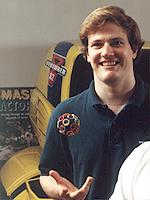
OUR PEOPLE

![]()
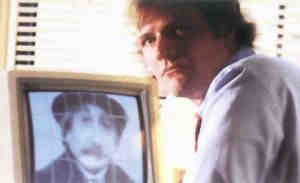
![]()
Christopher D. Watkins
Founder, Chairman & CEO
Algorithm, Inc.
Industrial Mindworks, Inc.
Inwit™
Chris has more than four decades of computer and software engineering experience, having created numerous industry firsts and prototypes from the ground up. He sees problems from their widest scope to their smallest details. Chris is an Electrical Engineer from the Georgia Institute of Technology with expertise in simulation, visualization, control systems, data analytics, and machine learning. Such disciplines all require his strong background in advanced mathematics, physics, and signals & systems, and they place him at the forefront of development of software applications for both scientific engineering and strategic business.
Chris builds applications that leverage the power of clever algorithms, data, and the Internet, in order to help companies thrive and dominate. His products show his extreme sensitivity to proper architectures for processing data and handling flow, which often include modular building-block structures, in order to be extensible and adaptive to future change. He creates systems so intuitive, that users do not even know of their leading-edge self-learning underpinnings — systems where a company's general workflow is not disrupted — where users are involved in what is created, thus not intimidated and want what is coming.
Chris' approaches naturally facilitate the Organizational Change Management (OCM) that is critical to successful implementation of engineered Enterprise Resource Planning (ERP) solutions. ERP solutions affect entire companies, and his focus on proper system and data architectures, along with his methods of preserving legacy historical data and capturing current and future data, afford the creation of ERP solutions that easily support data analytics. These data analytics have far-reaching influence across an entire company and their clients.
An example of being ahead of the curve might be that before the Internet had become popular in the middle 1990's, Chris had envisioned Internet WatchDog®, an application to help parents monitor and protect their children on the Internet. It quickly became a tool to help corporations gauge employee productivity. The product was very successful, receiving recognition by Fortune 500 companies and from such publications as Fortune Magazine and The Boston Globe. As a result, Fortune Magazine deemed Chris' company Algorithm, Inc. a "top-25 very cool technology company." The Boston Globe's comments were particularly humorous, as they were concerned the software worked so well.
Keeping at the forefront of early-to-market technology to help businesses, Chris authored The Internet Edge in Business for Academic Press in 1995. The goal was to help businesses take advantage of what the Internet offered at the time, and would offer in the future. Other books at the time were of the "get rich quick" variety, whereas Chris wanted to fundamentally help the effectiveness of businesses. A reviewer said it best as "a recipe for putting your business online." The book received strong positive reviews, with some reviewers practically acting as sales agents, saying "an introduction to what the Net has to offer business – it's ideal ... for the time-is-money business person."
Along similar lines of early-to-market business applications, Chris recently received U.S. Patent #9,245,148 (#8,700,890, DLA Piper LLP (US)) and Australian Patent #2010253964 for a next-generation cyberdefense weapon (Secure storage and accelerated transmission of information over communication networks).
Chris is especially known for his early-in-the-field contributions to computer graphics, signal processing, simulation, and the Internet. Some of his contributions took the form of books. In an effort to make mathematics and science accessible, Chris authored a multitude of technical papers and several popular best-selling books for Academic Press, Miller Freeman, Henry Holt & Company, and Harcourt Brace.
Chris saw a need for books which combine rigorous technical material with well-written text and software examples — books which make technical topics accessible and interesting to engineers, scientists, academicians, hobbyists, practitioners, and enthusiasts alike — books created with the requirement of what you see in the book is what you will be able to do. Several of his works were translated into multiple foreign languages, and many have been adopted by university graduate programs as textbooks and supplementary texts.
X-Ray Material Discrimination ... Physically Accurate Volumetric Reconstruction ... GPU Parallel Processing for Visualization and Machine Learning ...
Chris engineered radiometric algorithms and code, as part of a material discrimination suite for a dual-energy X-ray scanner security system. Such included his independent scientific research and development and was built by him from the ground up. The system detects explosives and contraband. Code for the system was realized as an Application Programmer's Interface ("API") written in C, so that others could easily utilize the work as a "black box API" from their Java application. Chris alone realized the API, given only client-provided system-scanned data and the end goal. The project is ongoing, and details will be made public in the future.
Some of tools in Chris' radiometrics toolbox include extracted-object thickness and distance measurement via raycast (cm), effective atomic number (Zeff), surface density (g/cm2), mass density (g/cm3), linear attenuation coefficient (attenuation/cm), mass attenuation coefficient (cm2/g), linear and mass absorption coefficients, and radiographic reflex and relative reflex. Other more experimental quantities include Zeff-e (Ze, a Zeff-like quantity), electron density (rho-e = electrons x mol / cm3), and stopping power ratio. Chris also employs many statistical methods for analyzing data, in order to gauge the true value and significance of results.
Given his background in practical physics and simulation mathematical modeling, Chris has developed many approaches to radiometry and Dual-Energy X-ray Absorptiometry (DEXA). He has also developed approaches for real-time volumetric reconstruction of data from few-view and many-view X-ray scanners. His volume reconstruction techniques provide both visualization and physical metrics for objects extracted from high-noise backgrounds and cluttered situations. He has also developed machine learning and signal processing methods for accuracy and precision metrics for CT and MRI modalities in medical imaging (both multi-modality fused and independent cases). Many of these methods are used for object detection, identification and classification. GPU coding for nVidia™ graphics cards was done, in order to enhance the time performance of the systems by processing algorithms in parallel for both the visualizations and the deep machine learning tasks.
Cutting Product Costs ... Fusing GPS-Accurate Imaging Modalities in Real-Time ...
Chris assisted Georgia Tech to make their interferometric waveguide chemical sensor cost effective. The goal was to yield the performance necessary for the particular use, but at one-hundredth their current cost. He designed and built electronics and software to accomplish just that.
Chris created OpenGL software for the interactive fusion of many live camera systems with terrain-accurate GPS-registered aerial and space-imaged data — a real-time fusion of modalities. Panoramas were precomputed for all cameras by panning and tilting them and aligning them in three dimensions, permitting accurate distance ranging and size measurements to be taken from any of the imaging modalities. A cursor movement in one modality would show in all of the other simultaneously displayed modalities, making system use very intuitive. The system was designed to easily set and control the pan/tilt/zoom target paths of all of the registered cameras.
Thoughts on Engineering for People & Business ...
Chris has the strong belief that it is the engineer's responsibility to work with a clear mind and diligently, so that when a user is working with the system the engineer has created — that the experience for the user is intuitive and simple — that a clear foundation and architecture is extremely important, regardless of what software may wrap around it or utilize it — that the users must be involved along the path of creation, so that proper course is kept and so users stay excited about the new system — that the psychology of the users is just as important as the technology, and just as interesting. He strongly believes that it is best when everyone in a company understands how something works, and that most topics are accessible, when thoughtfully presented by clueful people without arrogance.
Background ...
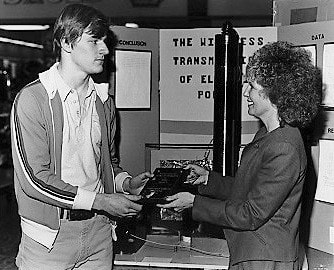
![]()
The Watkins-owned companies are outgrowths of a company that Chris founded in 1982 as a tenth-grade student. Throughout his life, his passions have run along the lines of invention, problem solving, human perception and cognition. He has particular interest in the development of technological tools that make businesses more effective and make mathematics and science more accessible to everyone.
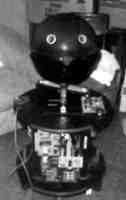
![]()
By the age of six Chris was heavily involved with electronics; by ten he was designing complex circuitry, human interface hardware, music/sound synthesis equipment, and high-voltage and radio transmission electronics; at fifteen he was designing and building robots. Around 1980 he began to concentrate on the interface of computer engineering, physics and mathematics, with particular focus on dynamics and fractals. This inspired his development of 3-D graphics and signal processing algorithms. He also became vitally interested in understanding human sensory perception and worked diligently to produce computer-based communication tools for students with disabilities in his high school.
Chris' high school science fair projects received industrial recognition and won top research awards: the United States Navy recognized him with a Navy Science Award for significant meteorological studies of electrical atmospheric phenomena, and Westinghouse recognized his valuable research on efficient electrical component design. This research later led to the creation of power components which optimize transmission by adapting to environmental conditions. Most interesting was some of the work in eleventh grade that utilized resonance characteristics of coils at various frequencies to transmit electric power wirelessly across a room. Following high school, Chris continued his studies at The Georgia Institute of Technology, where he received his Bachelor's Degree in Electrical Engineering in 1989.
Chris' early interest in robotics led him to working at the Computer Architecture Laboratory and Robotics Lab at Georgia Tech, alongside graduate students, before he even started his Electrical Engineering program at Georgia Tech. While giving a lecture at Chris' high school, the professor Dr. Cecil O. Alford from Georgia Tech, who ran the laboratory saw Chris' robots, invited Chris to join him and his colleagues in his laboratory — an opportunity that to this day is still greatly appreciated.
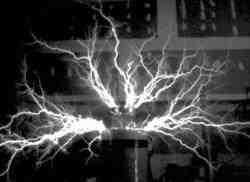
![]()
Chris has always wanted to put an equation to what he sees happen in the real world — he has always wanted to model everything mathematically — from physical phenomena to world economies and political elections, from social behaviors to psychology and brain function. Effectively Chris' early interest in control systems and robotics led him to ideas past the typical learned and adaptive control systems — he wanted to build control systems that learned the problems, as a human might learn them. This interest led him to independently pioneer some of the early advanced characterizing control systems (now popularly referred to as "deep learning").

![]()
Throughout the past four decades, several of Chris' longstanding passions gave rise to new products. His high-frequency, high-voltage electronics and power transmission experiments produced some of the early plasma globes and solid-state, special-effect neon sign transformers. His interest in guitar and recording resulted in some of the early analog and digital special-effects signal processors and synthesizers. Interest in astronomy led to the creation of a number of image and digital signal processing algorithms. His focus on computer graphics and physics simulation yielded one of the first simulators with multi-channel surround-rendered 3-D visuals, used for training in barge handling, protocol, and crew management. A lifelong interest in optics and holography inspired his invention of real-time 3-D holographic display technologies and an experimental 3-D picture tube, as well as production techniques for high-detail multi-color dichromated gelatin holograms viewable from many angles and under a variety of lighting conditions. Due to his interest in materials and his desire to prototype all aspects of his products, Chris acquired basic skills in fiberglass construction, silicone and alginate molding, urethane and foam casting, and vacuum forming of plastics. These skills were later used to create products for the movie and location-based entertainment industries.
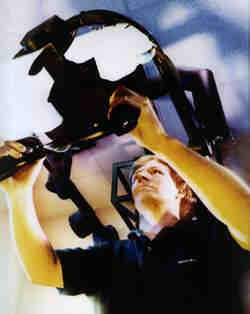
![]()
For many years Chris has developed PC-based computer graphics and simulation hardware and software for the training, education, medical and entertainment fields. This work required his mastery of 3D computer graphics, dynamics simulation, motion-platform control systems, electronics, image processing, programming techniques, PC hardware, mathematics and physics, robotics and neural simulation technologies. He pioneered one of the first six-degrees-of-freedom, real-time, near-photorealistic, texturing-and-shading renderers for the PC. His scientific breadth and in-depth knowledge of mathematics enables him to create concise algorithms which afford interactive, near-workstation performance of realistic graphics and simulation on the inexpensive PC.
Aside from his mentioned writing, Chris has also been a guest lecturer for many diverse groups on the subject of technology. He particularly enjoys giving lectures and demonstrations to elementary and high school students on topics ranging from science and technology to business to philosophy.
Chris' current and future projects include intelligent toys, immersive and imaginative learning systems, low-cost 3-D holographic displays and projected-display equipment, and computer-aided tools for medical diagnosis and continuing doctor education. He hopes to inspire curiosity, problem-solving and creative thinking through his products and technical publications, which bar no expense when it comes to quality, rigor, relevance, clarity, and accessibility.
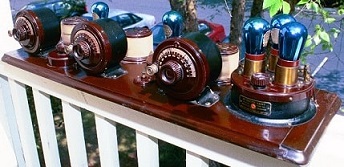
![]()
Chris enjoys the old technologies too, including restoring old 1920's & 1930's antique tube radios, and 1940's televisions. He believes there is much to learn from how people solved problems in the past — fundamentals of how "things" work — and thinking like the scientist back in that day that invented the discipline — when the field was new, and you had to invent and create from the ground up, forcing a fundamental understanding of the subject. Many invention ideas and like-to-have's of the past could not be realized in the technology of that day, but can be now.
He is most appreciative of his parents — they took an active part in his education — not by pushing him to learn his love, mathematics, but by providing any tools needed along the way. When Chris needed a particular electronic component, his father would buy it at Specialty Distributing on Juniper Street on his way home from IBM — he would surprise Chris with those Science Fair P-box electronics kits from Radio Shack. Chris and his father enjoyed the hobby of Amateur Radio too (KA4DQE - YouTube KA4DQE). When Chris was designing his first synthesizers and needed electronic keyboards, his mother would take him to Cooper Music on the Northeast Expressway to buy "beyond-repair" electronics organs for their keyboard sections. His parents supported his self-directed projects, initially teaching him how to acquire needed tools, then letting him figure that for himself. And a love of playing guitar came from both his parents and grandparents.
Chris and his family bounce between Florida and Georgia — he is very proud of his son who is very mechanically and technologically inclined, an inquisitive and creative thinker and inventor, and a brilliant writer. An up-to-date curriculum vitae, biography, and endorsements package for Chris is available.
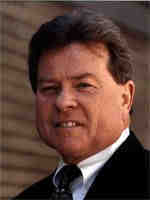
![]()
Henly Shelton
VP Sales & Marketing, New Business Development
... in memory of the passing of a real patriot and honest chap
Henly Shelton joined Industrial Mindworks, Inc. in 1999 to direct sales-and-service forces and marketing. He helped to identify new business opportunities and specify their requirements.
Henly was obsessed with customer care tied to sales productivity. His 30-year career in Executive Management, Sales, Marketing and Consulting was focused on selling value - not hype. He began his career with US Filter where his sales work gained him the attention of a Finnish company looking to establish an office in the US. He started as area manager and he exceeded his quota in each of those years. He was rapidly promoted to Vice President of Sales and then to the position of President for North American operations.
As president of the USA operations of Finnish manufacturing company Kajaani Automation, Inc., Henly sold and serviced intelligent sensors and controls for the pulp and paper industry and led sales forces to acquire 90% marketshare. He was also founder and president of In-line Measurements, Inc., a systems integrator and consulting firm specializing in intelligent sensors and controls. Within two years the company was profitable and was sold to the industrial systems company ABB. Henly was President and CEO of SalesMedia, Inc., an Atlanta-based company which develops electronic commerce software for the life insurance industry.
Henly’s focus on solution selling and customer care was the key to his success. Henly was profit-driven and detail-oriented. He worked for Aspen Technologies offering supply chain solutions for Pulp & Paper, Utilities and Metals and Mining. He was involved with software development for management of the quagmire of rules that companies had to master for compliance with the Foreign Corrupt Practices Act.
Henly earned a Bachelor of Science degree from the University of West Florida where he was active in intramural sports and a member of SAE. He earned his Executive MBA from Georgia State University in 1984 and completed Harvard Business School's Advanced Management Program in 1987.
Henly was a Viet Nam Veteran who served his country in the United States Marine Corp from 1968 to 1969, receiving the Purple Heart, Vietnam Service with three stars, Combat Action Award, Navy Achievement Medal with Combat Ribbon, and the Presidential UNIT Citation.
Henly is survived by his wife, two sons, and one daughter. He greatly enjoyed hunting, racquet ball and golf.
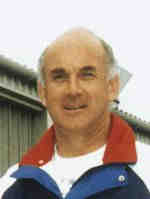
![]()
Paul Kingston
New Business Development
... in memory of the passing of a real patriot and honest chap
Paul Kingston was born in England and educated at the Britannia Royal Naval College in Dartmouth. He served as a pilot in the Fleet Air Arm for 22 years and became involved in training management early in his career. He served on various aviation-capable warships in the Royal Navy, French Navy and the United States Navy and in training roles with the navies of Brazil, Iran, and Australia.
Paul saw combat in South Yemen and Aden and developed expertise in training combat units for high states of tactical readiness and operational execution. He was the youngest peacetime commander of an operational aircraft unit onboard a Royal Navy warship. His all-weather special operations flying skills were effectively applied in training roles with the Royal Navy and other NATO allies.
Early in his military career Paul was trained in international diplomacy and the overseas sale of military equipment. He was then appointed to a position with the Royal Air Force flying in support of NATO armies in Germany, which involved monitoring operations of the East and West Germany border in cooperation with the British Frontier Police. Due to his diplomatic training and extensive international experience in over 60 foreign countries, Paul was appointed to senior staff positions with the Royal Navy and United States Navy. He was responsible for the training and operational standards of aviation-capable ships around the world, which involved further liaison with foreign diplomats and military personnel from various cultures.
 Towards the end of his flying career, Paul was liaison officer to the simulation and training industry in the procurement of multi-million
dollar training equipment for use by NATO armies and air forces. In 1984 he founded Kenray-IMC to provide business services to
high-technology and training equipment companies. Within one year he had contracts with Boeing, American Airlines, British Petroleum,
and several other companies in the USA, UK and Asia. He created trade shows to foster international business in air transport, aerospace,
military and commercial simulation and training, and entertainment. Industry leaders consider these shows a good platform for developing
international business relationships and alliances and also value their focus on real industry issues such as safety and the use of military
high-technology in commercial markets.
Towards the end of his flying career, Paul was liaison officer to the simulation and training industry in the procurement of multi-million
dollar training equipment for use by NATO armies and air forces. In 1984 he founded Kenray-IMC to provide business services to
high-technology and training equipment companies. Within one year he had contracts with Boeing, American Airlines, British Petroleum,
and several other companies in the USA, UK and Asia. He created trade shows to foster international business in air transport, aerospace,
military and commercial simulation and training, and entertainment. Industry leaders consider these shows a good platform for developing
international business relationships and alliances and also value their focus on real industry issues such as safety and the use of military
high-technology in commercial markets.
Paul assisted Industrial Mindworks, Inc. in identifying and securing contracts for military and commercial simulation and in creating alliances for product distribution and strategic industrial partnering.
Paul is survived by his wife and one son. He was an avid motorcar enthusiast.
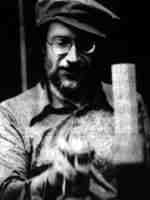
![]()
Vincent P. Mallette
Researcher, Science Writer
... in memory of the passing of a true scientist and physicist
From 1970 to 1988 Vincent Mallette was a research scientist at The Georgia Institute of Technology School of Physics, where he created large classroom physics demonstrations and public science shows for recruitment and entertainment. He worked briefly for the high-tech company Ionic Atlanta but has spent most of his life educating people about science in a dramatic and entertaining manner. He has given over 300 lectures and demonstrations from New York to Birmingham and is an important figure in Georgia education.
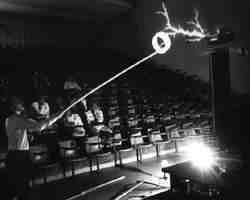
![]()
In 1991 Vincent spent three months as scientist-in-residence at Fowler Elementary School where he worked closely with teachers to improve science and math education and to help students achieve regional science fair recognition. At the request of the Atlanta School Board, Vincent critiqued and amplified the Atlanta Public Schools' master lesson plan resource, the Elementary & Middle School Science Curriculum. He also served on the SciTrek exhibit committee creating new demonstrations, improving old ones, and conducting teacher training and enrichment programs like "Light, Color, and Sound," which called upon his special interest in human sensory perception. For Georgia Tech's two-week SummerScape course, he developed and taught "The Hidden World" using hands-on demonstrations to show kids how science illuminates that which escapes the unaided senses. From 1990 to 1993 he created and presented science demonstrations and activities for local pre-college students through Georgia Tech's Dean's Office, and in 1998 he directed Clark-Atlanta University's outreach support program supplying science curricula and equipment to disadvantaged students and schools. One of the few recognized by Westinghouse in his science fair days, Vincent also enjoys helping students with their projects and manned the science hotline Sci-Line.
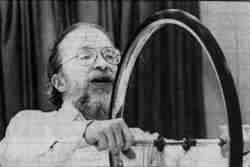
![]()
Vincent has made several network television appearances including ABC News and CNN, who recently commissioned him to reconstruct the physics of Princess Diana's fatal accident. Atlanta TV presentations include a 100-year retrospective on the light bulb and a superconductivity program featuring the floating magnet demonstration.
Vincent has been published in The Physics Teacher, American Journal of Physics, and Physics Today; he wrote a two-part series on human vision for Optics & Photonics News. For juvenile magazines such as Smithsonian's Time Machine, he has contributed science history articles on topics from Edison's movie-making and Columbus' navigation to the history of the erector set. In 1995 he co-authored Stereogram Programming Techniques with Christopher D. Watkins, and in 1996 he had published The Science of the Summer Games, a book exploring the role of science in Olympic sports which was originally commissioned by the American Association for the Advancement of Science. Some of Vincent's writings and radio show transcripts can be found on the Inwit web pages.
For Industrial Mindworks, Inc. and Inwit, LLC, Vincent created educational writings, curricula, demonstrations, toys and games, and explored every avenue to enlighten and inspire kids of every age!
![]() BOOKS WRITTEN BY CHRISTOPHER D. WATKINS
BOOKS WRITTEN BY CHRISTOPHER D. WATKINS